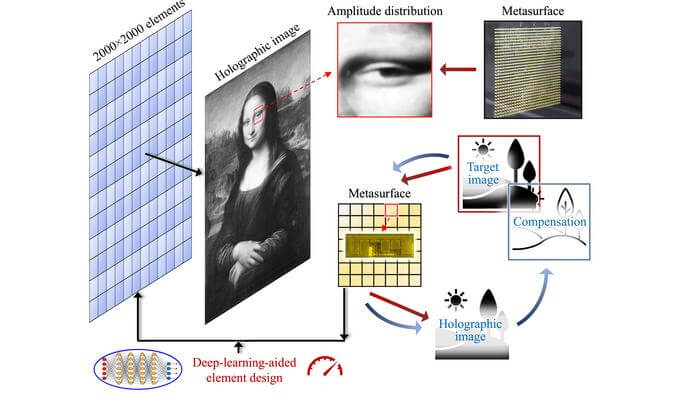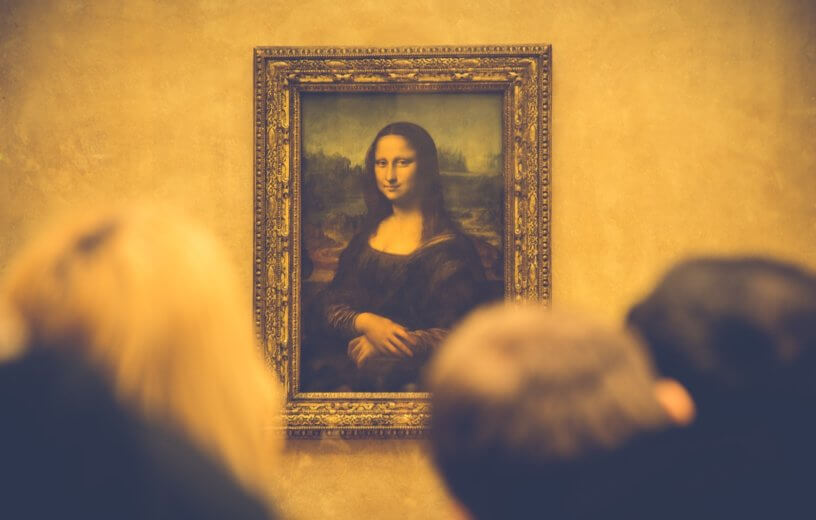WASHINGTON — Leonardo da Vinci’s renowned masterpiece, the Mona Lisa, has been revitalized — as a hologram, thanks to artificial intelligence (AI). A cutting-edge computer neural network has meticulously reconstructed the subject’s elusive smile with an unprecedented level of detail. The photographic projection of this 16th-century marvel could potentially augment medical treatments.
Presently, holograms serve as an invaluable tool in medicine, offering a three-dimensional display of patients’ organs, like hearts, during surgeries. They provide real-time information and a direct view of internal instruments, such as catheters. Additionally, holograms can enhance accuracy during minimally invasive procedures aimed at rectifying heart rhythm disorders.
“We chose to recreate the Mona Lisa as a proof of concept. It’s so famous that it’s almost universally recognized. It is so famous that almost everyone knows about it. It is filled with countless delicate and subtle transitions of layers, which enhances the softness, haziness, and mystery of the painting,” says Dr. Yue-Sheng Wang of Tianjin University, China, the study’s lead author, in a media release. “So it is a great way to demonstrate the effectiveness of our method.”
Scroll down to see 4 common uses of holograms in 2023

Holographic reconstruction of the Mona Lisa by a megapixel acoustic metasurface.
(credit: Miao et al.)
Although depicted as life-sized, colorful images in science fiction, holograms are very much a present-day technology, according to the international research team. Their technique is predicated on advanced machine learning — a branch of AI.
Holograms are fabricated by capturing and reconstructing the interference pattern of light or sound waves. They yield realistic and immersive visual or auditory experiences and find application in diverse sectors, including entertainment, medical imaging, and communication. “Metasurfaces” — two-dimensional materials composed of an array of minute components — can significantly assist in this process.
“A metasurface-based hologram works by precisely controlling the phase and amplitude of the waves interacting with the metasurface,” explains Dr. Wang. “As a result, the outgoing waves at each pixel exhibit a certain amplitude and phase, which results in the desired holographic image based on their interference.”
Aiming for heightened efficiency and precision, the researchers developed an algorithm that customizes antenna-like structures within the metasurface. By reducing disparities between the original and the holographic image, they refined it into a high-quality hologram. They successfully reconstructed the Mona Lisa, capturing her left eye in even greater detail. Their technique could be extended to generate three-dimensional images.
“The precise control of sound waves offered by our holography method is pivotal for advancing non-invasive medical therapies, effective noise control, and optimizing acoustic environments like concert halls,” says Dr. Wang.
The researchers anticipate that their method will revolutionize holography. They aim to generalize the method, make it compatible with 3D printing, and reduce the time required for training.
The study is published by AIP publishing under Applied Physics Reviews.
4 common ways society uses holograms today:
- Security and Anti-counterfeiting: Holography is frequently used on credit cards, passports, banknotes, and high-value consumer goods to protect against forgery. Holograms for these applications are designed to be difficult to reproduce without specialized equipment and expertise.
- Product Authentication: In addition to protecting against counterfeiting, holograms can serve as a mark of authenticity for products. When you see a hologram on a product, it can signal that the product is genuine and has been manufactured by the stated company.
- Medical Imaging: Holography can be used to improve medical imaging techniques, particularly in the field of medical tomography, where 3D images of patients are constructed for diagnosis and treatment planning.
- Art and Entertainment: Holograms are popular in the entertainment industry, where they can bring deceased artists back to “life,” or provide a new way to visualize characters and performances. They’re also used in unique art installations.
South West News Service writer Mark Waghorn contributed to this report.

